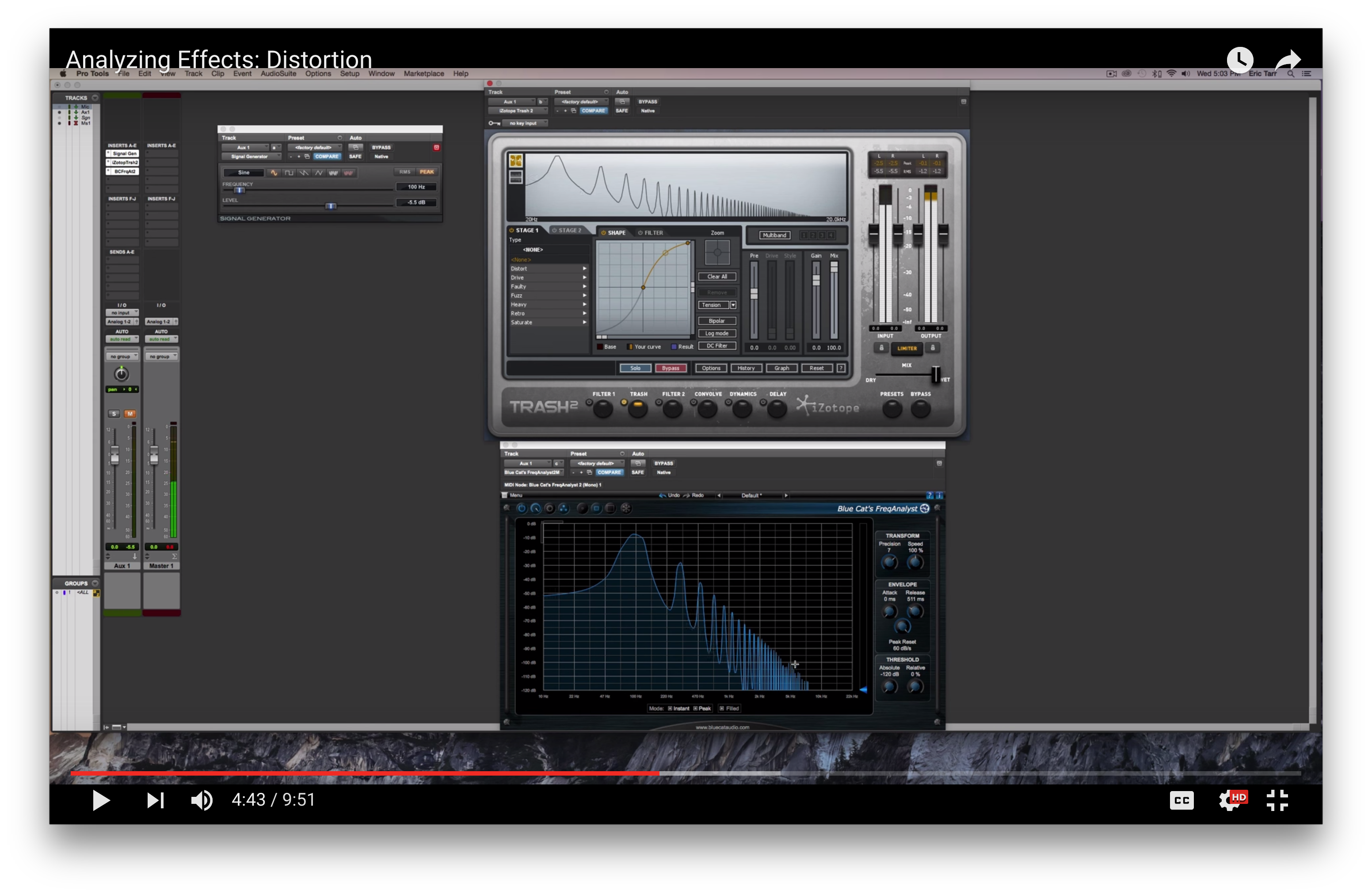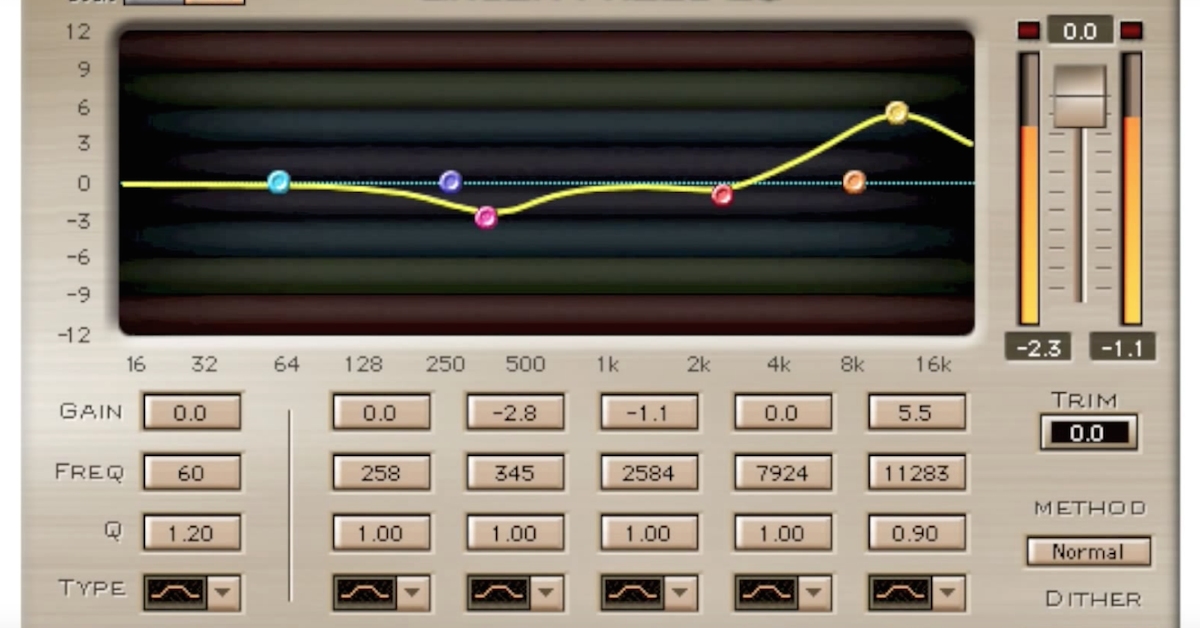The Fundamentals of Phase Distortion Synthesis
Article Content
In the mid-1980’s I purchased my first synthesizer, the Casio CZ101. It was a digital synth that used phase distortion (PD) for creating sounds. At the time, it was being marketed in both music and consumer electronics stores as an affordable version of more complex instruments from the CZ series but was incredibly capable in its own right.
Phase Distortion
The “term was invented by the Casio Corporation to describe a simple modulation technique developed for several of its synthesizers.” (Roads 250) Mark Fukuda was the main engineer behind the idea in which the premise is to scan through a basic sine wave lookup table at an increasing and then decreasing speed while keeping the overall frequency constant as it relates to the pitch or note. The method produces waveforms that are distorted from the original sine wave and can be quasi-triangular or sawtooth forms. (source)

(Image source)
In Sound Synthesis and Sampling, Martin Russ compares phase distortion to the effect of a transfer function. “A transfer function is a graph which relates an input to an output.” (Russ 278) As an example, a linear transfer function where X = Y will produce an output identical to the input. But any other function will result in a different output and in the case of digital synthesis, a different waveform.
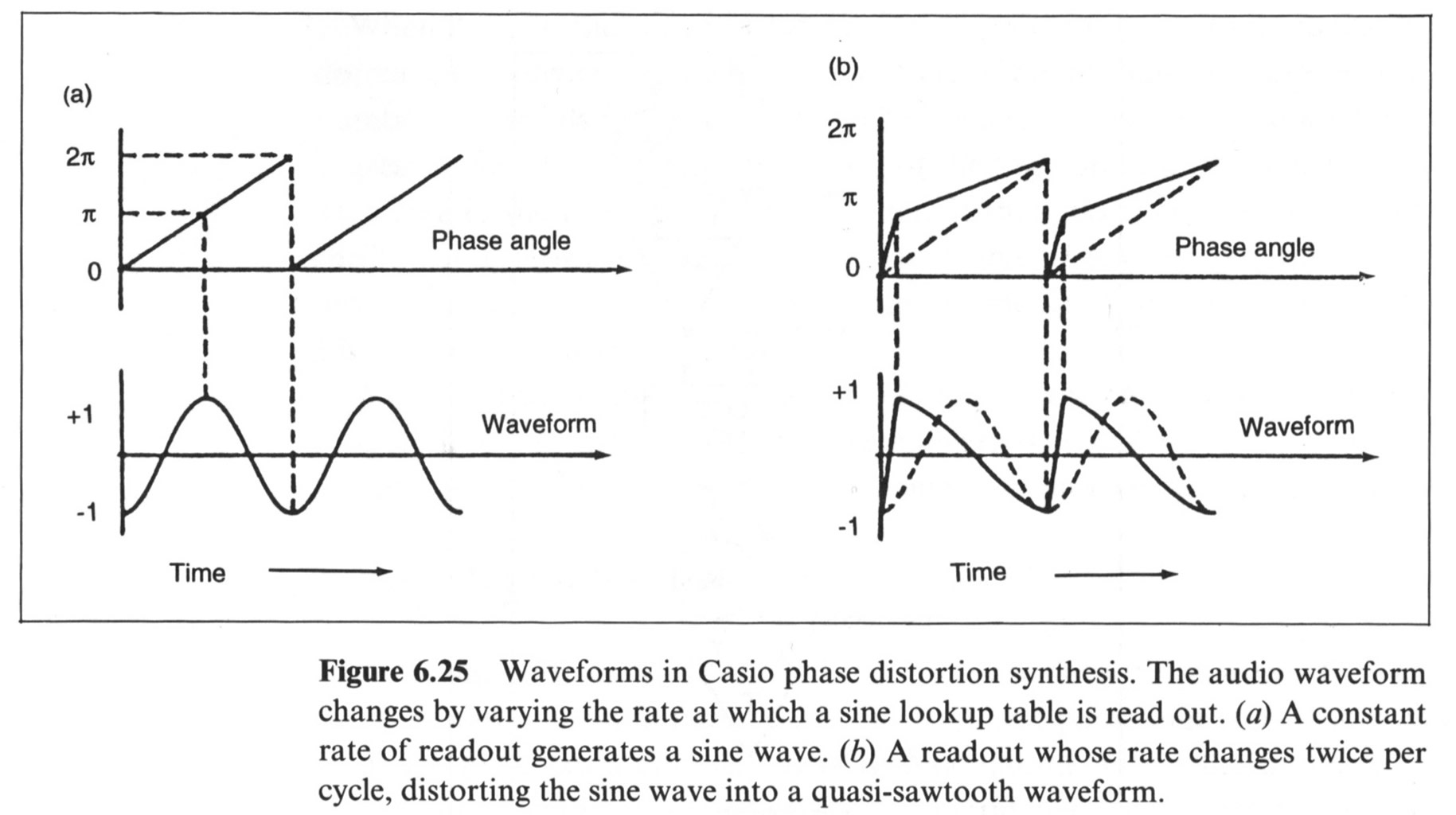
Casio used this waveshaping technique and coined the term phase distortion in the mid-80s, during the peak of Yamaha’s DX7 popularity and the domination of FM synthesis. Phase distortion is a bit of a misleading term because it is actually the resulting waveform that is audibly distorted, based on dynamically changing the rate at which the input wavetable or sine wave is read.
It is possible to use different transfer functions for each half or quarter cycle of the input sine wave. “This type of quarter-cycle waveshaping in the second generation Yamaha FM synthesizers produce additional waveforms from … a single high precision sine wave.” (Russ 279)
Below are resulting waveforms based on using independent linear transfer functions on each quarter cycle of a sine wave.
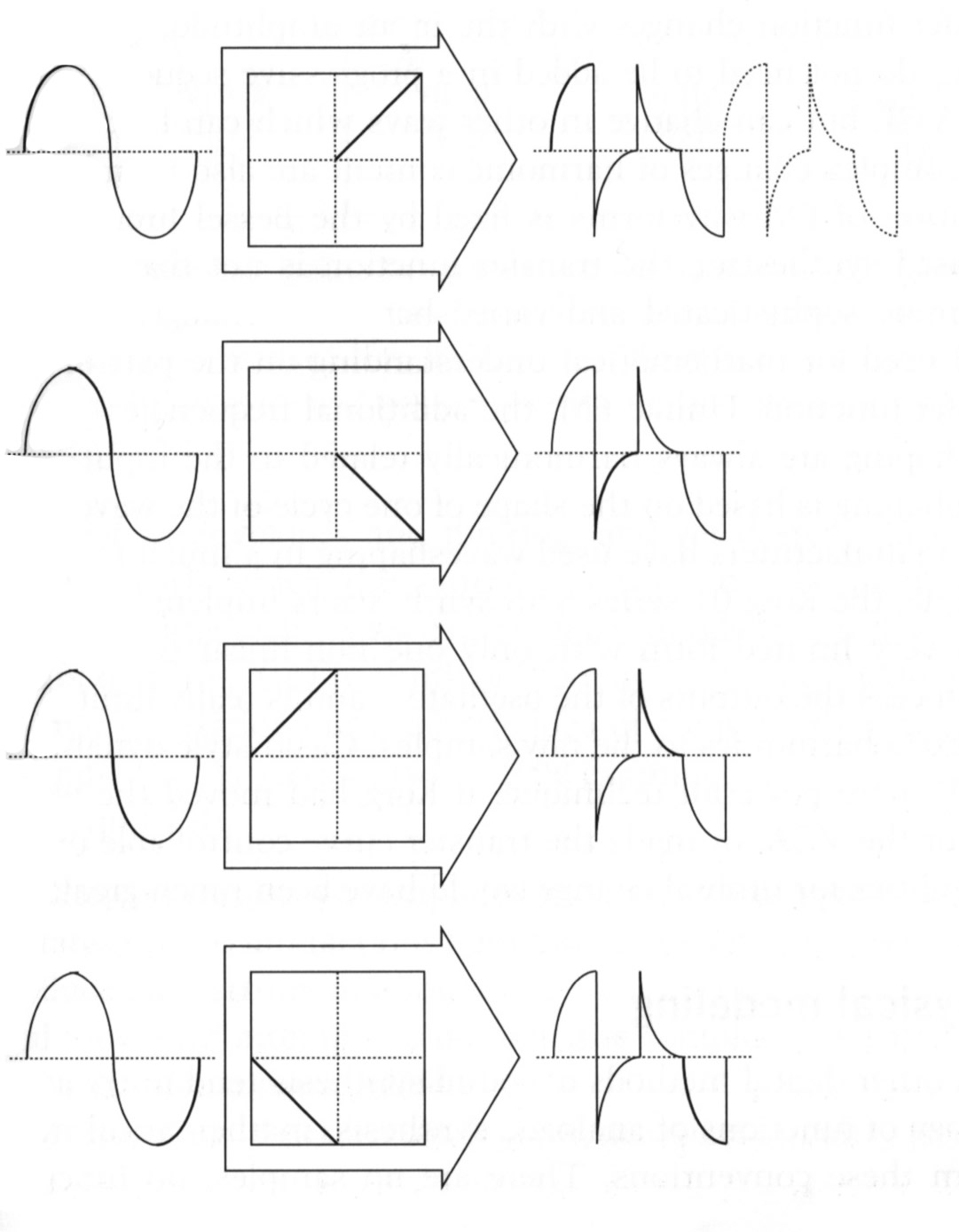
(Russ 279)
So, based on the transfer functions used you can produce an infinite variety of wave shapes and harmonics from a simple sine wave input.
Analog Emulation
One of the main concerns in digital synthesis is the emulation of analog circuitry. The change in harmonic content that occurs from changing the cutoff frequency of a low-pass filter is one the most iconic sounds in synthesis. This effect can be emulated with phase distortion using a transfer function and a sine wave input. Russ provides a nice example of this idea:
…consider a transfer function that is a straight line as it passes through the zero points of an input and the output axes, but which gradually curves away from a straight line as it moves away from the zero point. At low amplitudes of the input sine wave the output will also be a sine wave, because only the linear portion of the transfer function will be used. But as the input level is increased, the non-linear parts of the transfer function will be used and the wave shape will be distorted. (Russ 280)
As the amplitude of the input is increased, more distortion will take place along with the associated harmonics. An amplifier is then used to compensate for the increased input levels. The effect is “a smooth transition from a sine wave to a waveform containing a number of harmonics.” (Russ 280)
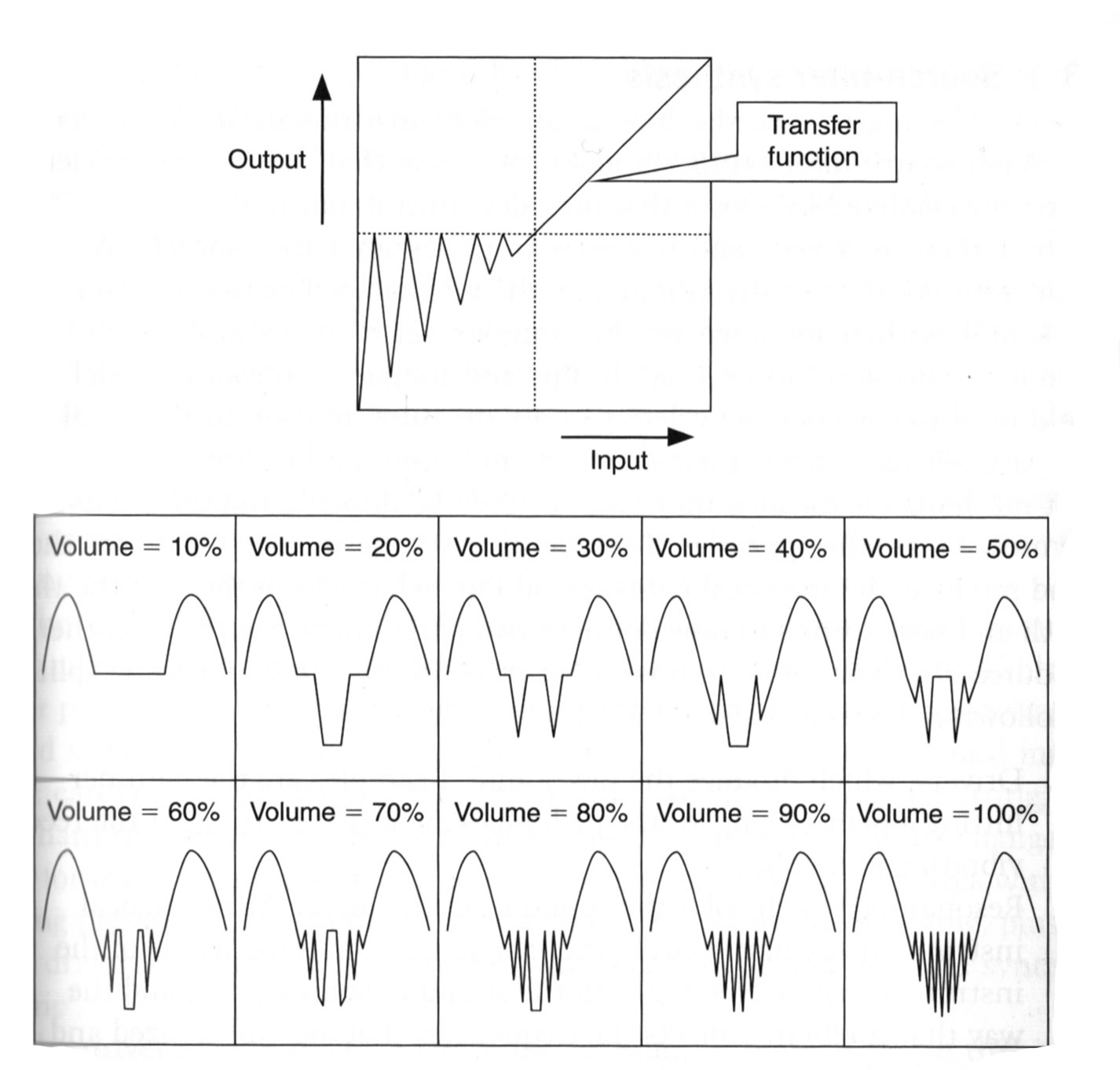
The difference between this technique and a VCF is that in the former, the “evolution of the waveform is dependent on the way the transfer function changes with the input amplitude”, as opposed to harmonics being “added in a progressive sequence…” (Russ 280)
Through the use of dynamic waveshaping and variable transfer functions such as those used by Casio, complex waveforms are possible.
Comparison with FM
Frequency Modulation (FM) was pioneered by John Chowning and first made commercially viable by Yamaha and particularly with the DX7. The technique incorporates what is referred to as phase modulation (PM) which “uses an oscillating modulator that can have its own period.” (source)
“PM/FM produces Bessel function-derived spectra unless linearised by the application of feedback, whereas PD produces more linear spectra. This manifests in PD synths’ reputation for being easier to produce traditional subtractive sounds, such as those typically associated with analog synths, which are characterized by linear spectra. These facts demonstrate how although the broad concept — alteration of phase — is the same, implementation and results differ greatly.” (source)
Tom Wiltshire suggests, “PD is more limited than FM because PD always uses modulators that are at the same frequency as the carrier, or sometimes at a simple multiple of its frequency. Increasing the frequency of the triangle wave (as would be possible on an FM synth) produces a complex effect on the phase distortion.” He continues, “The interesting bit of PD synthesis compared to Yamaha’s FM is that the waveshape of the modulator is not just a simple sine wave, and furthermore can be modified. The sine-to-ramp PD waveform on the Casio CZ is the same as applying a variable ramp-down/triangle/ramp-up waveform as a modulator to a carrier. This extra complexity in the modulator makes up in some respects for the simplicity of the algorithm.” (source)
Oli Larkin, developer of VirtualCZ–a Casio CZ emulation plugin, speaks to the difference between FM/PM and PD:
Both types of synthesis allow you to generate very pure sounds but also very harsh, complex sounds. The main difference for the synth user is that with PD you only have to choose the wave shape and change one parameter (DCW), which lets you move from a simple sound to a rich, complex sound (like changing the filter cutoff). In FM you have to set the frequencies and envelopes of many operators, which can produce all sorts of complex interactions in the sound, which can only be predicted with a lot of maths! You don’t need a PhD in DSP to program a CZ! (source)
The Sound
“PD and the CZ synths, in general, are really nice for synth strings, pads, metallic percussion, bells and synth bass sounds.”(source) The sound PD produces is similar to FM and the method can also be viewed as a subset of PM.
The sound that came out from it was “ thinner “ comparing to the more expensive analog synthesizers. Phase distortion technique initially tried to simulate analog filters. It had in total eight different wave-forms. As well as the standard saw-tooth, square, and pulse wave-forms, it had a special double sine waveform, a half-sine waveform, and three wave-forms with simulated filter resonance: resonant saw-tooth, triangle, and trapezoidal wave-forms. (source)
Following the CZ series of synthesizers, Casio released its VZ series:
Casio VZ series utilize Interactive Phase Distortion synthesis (iPD synthesis). Although named similarly, this is much more similar to Yamaha-style phase modulation synthesis than to Casio-style PD: the modulators in iPD are oscillating waveforms, rather than the angular functions of the original PD. Thus the CZ and VZ engines are quite different and not directly compatible, filling different sonic and architectural niches. (source)
Conclusion
Digital synthesis has come a long way since the release of the CZ series with huge advances in computing power and hybrid techniques. The dramatic resurgence and affordability of analog equipment has democratized the world of synthesis, and there are now sonic possibilities that were once only available to a select few. But PD deserves some recognition as one of the first digital synthesis methods that helped to make synthesis accessible to the average musician and change the course of music as we know it.
_______________________________________
References
“Casio CZ Synthesizers.” Wikipedia, Wikimedia Foundation, 20 Nov. 2018, en.wikipedia.org/wiki/Casio_CZ_synthesizers.
Music, Computer. “What Is Phase Distortion Synthesis?” MusicRadar, MusicRadar The No.1 Website for Musicians, 18 Mar. 2015, www.musicradar.com/news/tech/what-is-phase-distortion-synthesis-618081.
“Phase Distortion Synthesis.” Synth and Stompbox DIY, electricdruid.net/phase-distortion-synthesis/.
“Phase Distortion Synthesis.” SoundBridge, 22 Mar. 2017, soundbridge.io/phase-distortion-synthesis/.
“Phase Distortion Synthesis.” Wikipedia, Wikimedia Foundation, 20 Nov. 2018, en.wikipedia.org/wiki/Phase_distortion_synthesis.
Roads, Curtis. The Computer Music Tutorial. MIT Press, 2012.
Russ, Martin. Sound Synthesis and Sampling. Focal Press, 2013.
Check out my other articles, reviews and interviews
Follow me on Twitter / Instagram / YouTube




